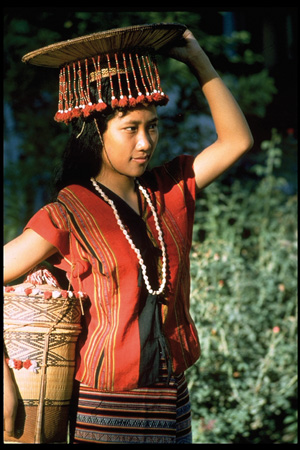ISEAS DAM reveals Asia from a lost era

Images from the the Dorothy Pelzer collection are being made more widely accessible via a Cumulus Digital Asset Management (DAM) platform used by the ISEAS library to handle a growing multimedia collection.
While many of her contemporaries were tuning, in turning on or dropping out, US architecture graduate Dorothy Pelzer spent the 1960s doing something a lot more constructive.
Between 1962 and 1970, she travelled in Brunei, Burma, Cambodia, Hong Kong, Indonesia, Laos, Malaya, Philippines, Sarawak, Singapore, Thailand, and Vietnam - photographing the unique buildings, habitats and lifestyles of south east Asia.
Pelzer took a huge number of anthropologically significant photographs, documenting traditional building forms, including houses, granaries, temples, boats, and graves. In 1968 and 1971, she received support for continuing her work from the J.D. Rockefeller III Foundation.
For many buildings, the photographs show facades, structural and decorative details, and, often, interior views. For some structures, the photographs also show surroundings. There are also a few aerial photographs of settlements, photographs of models of Southeast Asian houses, and illustrations from books on houses. A few photographs show the construction of buildings and the use of construction tools.
There are portraits, some of natives and some of friends. There are also views of village scenes, markets, street vendors, processions and ceremonies, carts, food processing and preparation, burden bearing, water wheels, oxen, musicians and musical instruments, and such crafts as bronze casting, spinning, weaving, and the preparation of lacquer.
The Dorothy Pelzer collection of over 15,000 colour slides, black and white negatives and photographs form the heart of Southeast Asian Cultural Collection (SEACC) at The Institute of South East Asian Studies (ISEAS).
ISEAS is a regional research centre located in Singapore and dedicated to the study of socio-political, security and economic trends and developments in Southeast Asia and its wider environment.
Supporting the Institute’s aim to nurture a community of scholars interested in the region, the ISEAS library has turned to the Cumulus Digital Asset Management (DAM) platform to handle a growing multimedia collection.
ISEAS first purchased a Cumulus Single User to act as a digital asset management platform for over 50,000 scanned images of Southeast Asian cultural photographs (habitats, ethnic customs, daily life, etc).
Librarian Gandhimathy Durairaj said the institute was underway with a program to digitise all photographs, slides and negatives in the collection, where they are subsequently loaded into the Cumulus database for indexing.
Established in 1968, the ISEAS library boasts a large multimedia collection documenting the region’s ethnic, anthropological and cultural norms. The task of digitising the collection is huge and so far only 3480 images have been indexed in the Cumulus database, with the accompanying application of descriptive metadata.
“We are using IPTC fields and created some basic fields like Author, Title, Photographer, Date taken, Location etc. under General,” said Ms Gandhimathy.
“We are using Categories and sub-categories to sort the photographs according to the broader cultural subject. We are using notes filed for the description of the images for easy retrieval”
In March 2010, ISEAS purchased a Cumulus Workgroup Server via system integrator Digital Imaging Workflow. The ISEAS building is a showcase for Asian culture and is located within the University campus. Many organisations within the university use ISEAS as a focal point to hold discussion meetings and conferences. Access to the facility is also available for external organisations.
Public workstations are networked to the image library and are often in high demand as the contents are key to many research projects. ISEAS now has workstations in the general library area with Cumulus desktop application installed. These are accessing the library of images as well as electronic documents which use Cumulus's text retrieval feature.
To attend to this increasing need ISEAS is expanding the image library to be available via web browser so any networked computer can be used to access contents. As the service is expanded so will the collection be enlarged to match demand.
In order to make the collection available via the internet, ISEAS has now purchased Cumulus Sites (Web Publisher) and is planning to create databases for its private paper collection.
Consultant Kuet Ee Foo from Singapore’s Digital Imaging Workflow said, “Cumulus gives a visual documentation as the interface, which is much more superior than just having text information for the collections.
“Many organisations in the cultural heritage sector are still using MS Excel or Access to record the metadata, and would store the images, PDF documents or other digital assets separately in CDs/DVDs.
“This “traditional way” disjoints the information data from the digital asset itself, which is less than ideal and a shame, because our technology today is so capable of aggregating them for high functionality and utility.
“Unlike using folders, where an object can only fall squarely into one category, in Cumulus, more than one category can be tagged to one record. Therefore, the users have the ability to categorise the collections by more than one subject or in a multi-prong way.”
